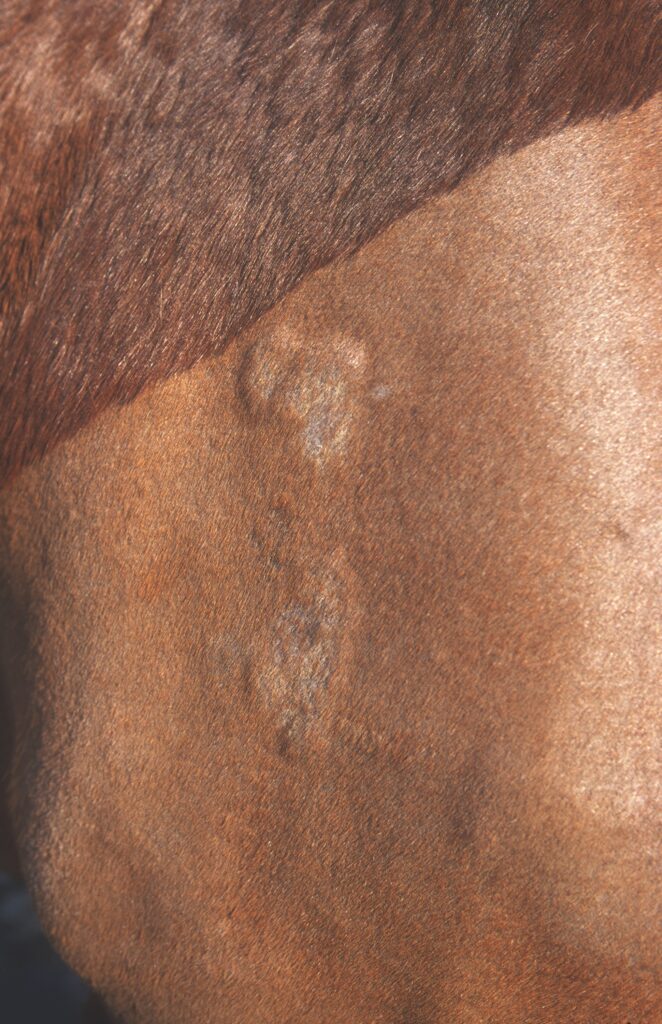A girth-sore impostor
- August 16, 2023
- ⎯ Equus
Girth sores are typically associated with stiff, dirty or ill-fitting tack. Or they are found on overworked or poorly conditioned horses. How, then, did your well-kept horse with clean, quality tack end up with a girth sore? Look again—your horse may have something else entirely.

The girth area is a common site for ringworm to appear. Despite its name, ringworm is actually a fungal skin infection that is easily passed from horse to horse on shared equipment. It can also be passed by a rider’s boots, which would rest on the horse just behind the girth area during riding. Ringworm causes round, hairless patches on a horse’s skin that can crust, ulcerate and bleed if irritated by tack. That’s why ringworm can easily be confused with a girth gall.
Click here to learn 5 ways to protect your horse’s skin.
Your veterinarian will be able to differentiate between ringworm and a girth gall and recommend the appropriate treatment. If the culprit is ringworm, you’ll also need to disinfect all your tack, brushes and shared equipment, as well as your boots.
This article first appeared in EQUUS issue #446
Don’t miss out! With the free weekly EQUUS newsletter, you’ll get the latest horse health information delivered right to your in basket! If you’re not already receiving the EQUUS newsletter, click here to sign up. It’s *free*!








